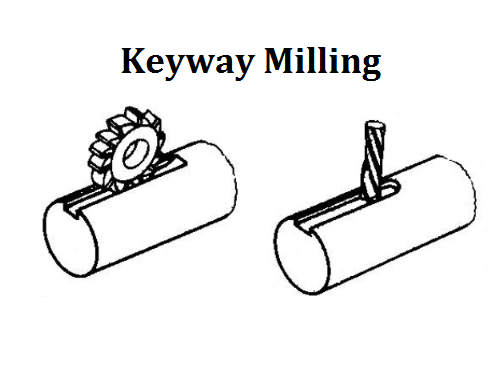Shaft Keyway Slot

A keyway is a square channel machined into round a steel bar. The channel, or keyway, provides a place for a square piece of metal known as a key to lock a pulley or sprocket onto the round bar. The square key fits in both the keyway and a square slot machined into the sprocket or gear. By fitting securely between the round bar and the gear, the key creates a sturdy connection in the assembly. Typically, the keyway is machined into a piece of steel prior to any heat treating or hardening of the piece.

Shaft Keyway Slot Bearing

The keyseat refers to a slot and pocket in which the key fits. However, this whole system is what we call the keyed joint, and this allows relative axial movement between the parts. There are five major kinds of keys: 1. Sunk: These keys are set half in the keyway of the shaft and half in the keyway of hub or boss of the pulley. Applied shaft diameter d Key size Keyway size; b h c or r Standard size of b1 and b2 b1 tolerance (H8) b2 tolerance (F7) r1 and r2 t1 t2; Standard size Tolerance(p7) Standard size Tolerance (h9) Standard size Tolerance Standard size Tolerance; 4×4: 10 or more and 13 or below: 4 +0.024 +0.012: 4: 0 -0.030: 0.5: 4 +0.018 0. A keyway is a square channel machined into round a steel bar. The channel, or keyway, provides a place for a square piece of metal known as a key to lock a pulleyor sprocket onto the round bar. The square key fits in both the keyway and a square slot machined into the sprocket or gear.
Many components utilize a keyway to produce a slip-proof method of attaching rotating parts. Axles, crank shafts and drive shafts all use a keyway to hold other components in place as they spin and provide power to drive other mechanisms. In some critical components such as propeller shafts, a special soft key stock is used that allows the key to shear off if it contacts a hard surface. By using a shear pin or key stock, damage to the shaft is eliminated as the propeller is allowed to spin free without damaging the shaft.
In automobile engines, the crankshaft has a keyway machined into the snout end that holds the harmonic balancer in position. All of the engine's accessories such as the alternator, air conditioning compressor and power-steering pump are driven off of belts that are powered by this balancer. Some of these accessories, such as the power-steering pump, commonly use a keyway machined into the pump shaft in order to hold the drive pulley in place as well.
Typically offered in many sizes, the size of the channel in the shaft and the key must be properly matched. Failure to match the proper-sized key with the correct size channel would result in a sloppy fit between the gear or pulley and the shaft. Any resulting slop would eventually lead to a broken key or a damaged gear, pulley or shaft. There are also different keyway styles that can be used for different applications.
Shaft Keyway Specs

Shaft Keyway Types
While the square key stock is the most commonly used key material, half-round keys are used in many engine key applications. This half-round style of key is popular in applications where the entire key is placed underneath a single gear or pulley. With this key, the shaft is milled to receive the round portion of the key. The remaining key emerges from the shaft as a flat and square key that slides into the groove of a gear or pulley.